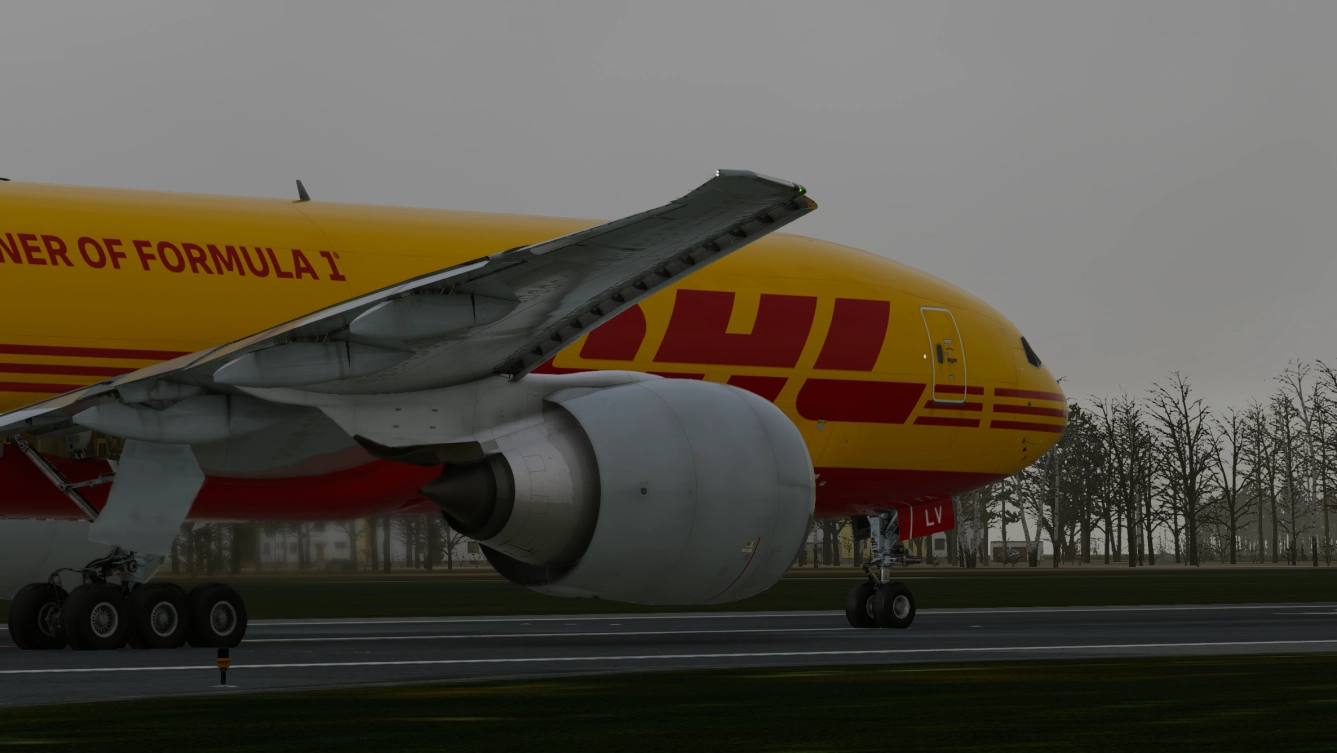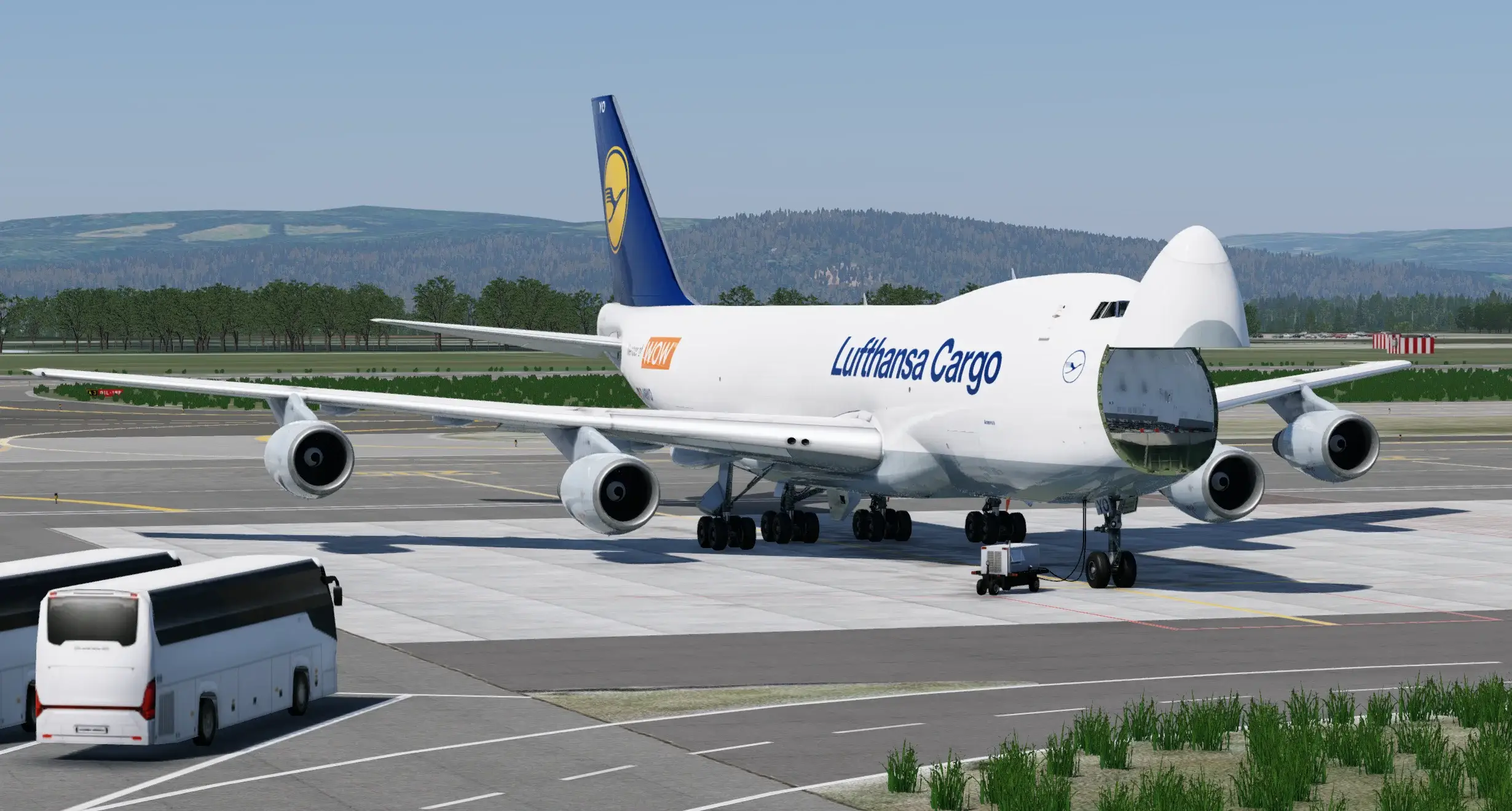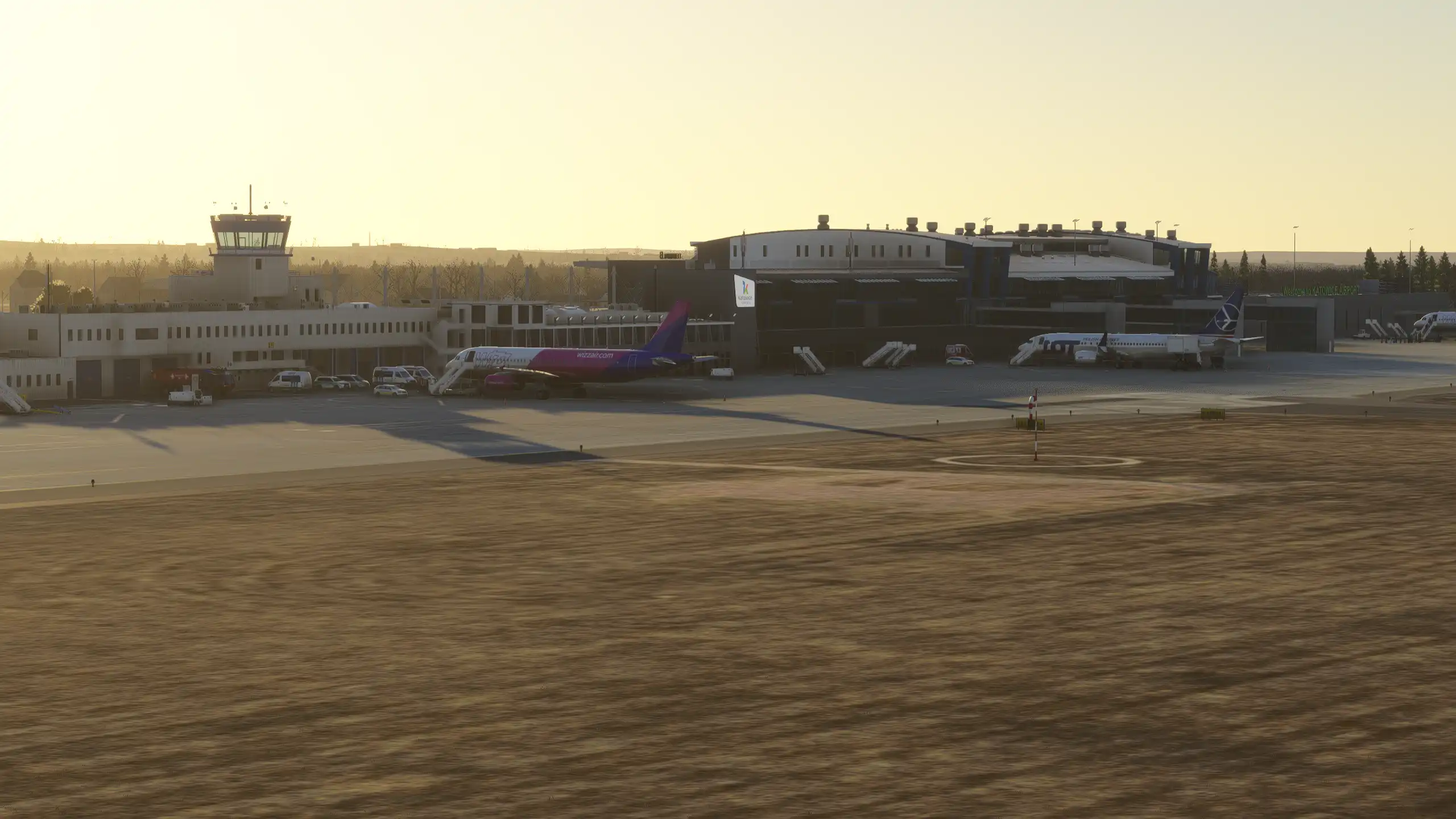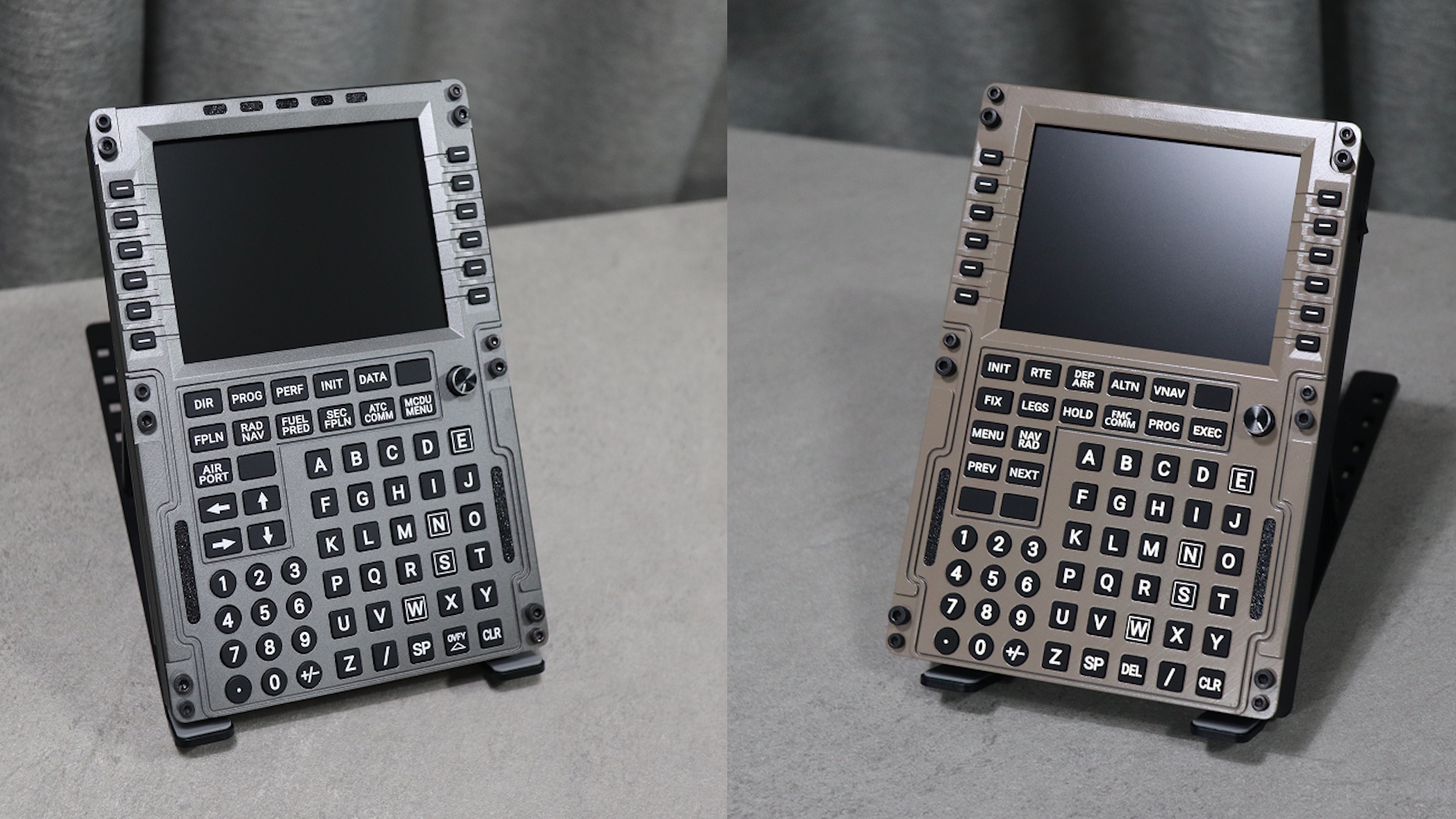Threshold Review: VSKYLABS FA Tensor 600X for X-Plane 11
September 1, 2020
Copy Provided
Copy Provided
VSKYLABS products tend to change dramatically over their first year on the market. Though they are not advertised as "Early Access," a typical VSKYLABS aircraft follows an EA development cycle. The Dynali H3 helicopter, for instance, received a "sport" airframe upgrade with alternate tail stabilizers and skids a month and a half after its debut. The Robinson family of helicopters, only the R66 of which has been released, are predicted to share many subsystems over the multiple years between their releases and upgrades. Tweaks, improvements, and bug fixes are not unique to VSKYLABS in the world of payware flight simulation modules, but the sense that no VSKYLABS "project," as they are marketed, is ever finished is a charm in the long run but can be a surprise at launch.
In the case of the FA (Fraundorfer Aeronautics) Tensor 600X, a real-world prototype aircraft that completed its maiden test flight just this year, consumers ought to expect a work in progress whose systems and flight envelope necessitate refinement and expansion as its real-world counterpart matures. During the short time between the writing of this review and product launch the Tensor has already been patched to include a G-meter on its dash - a welcome upgrade for any aircraft and especially one with unfamiliar flight characteristics.
The mission space of the Tensor is advertised to include transport, logistics, and reconnaissance, and its manufacturer targets urban airspaces, specifically, for its envelope of operation. The pitch for the Tensor imagines cities peppered with micro airports: a Jetson-esque future of skyscrapers with paved roofs to support the STOL requirements inherent to the autogyro type. X-Plane 11 though, even with its massive catalog of third-party content, requires imagination on the part of a Tensor pilot to operate this craft in the mode fantasized by FA marketing materials. Being a sim pilot who welcomes a bit of fantasy myself, I air-taxied my Tensor near stall and into the wind onto a large skyscraper helipad in Santiago, Chile (I had to abort several of my approach attempts and I rolled over the pad edge on several more). I practiced STOL circuits between the Anacortes airport and Allan and Burrows islands imagining myself a weekend joyrider. I surveyed power lines in Washington and shuttled mail along a route of bush strips in Idaho canyons. I drove an airline passenger from a small suburban airstrip to an international airport in the city and dropped them off in the departures car lane - my main rotor was barely wider than a city bus - and I took back off before I made it to the arrival gates. These flights were cathartic, and the mere existence of a high-quality payware autogyro in X-Plane 11 incentivized me to break my regimented sim routine and reminded me what a breath of fresh air novelty can be in a hobby as focused as ours.

Modeling
The VSKYLABS Tensor looks slick from a distance with the streamlined profile of a piece of aircraft concept art. From an orbiting camera the reflected sun smoothly glides between its fuselage and canopy glass belying neither seam nor scratch on any of its factory-polished surfaces.


Its vibrant paint schemes and crisp decals evoke the same future-tech aspirations that we have seen in all urban air-mobility concepts before it, so it feels tonally appropriate that when approaching the Tensor up close the machine, like a true concept aircraft, does not increase in fidelity.
There is no texture to the surfaces of the Tensor exterior. These do not feel like metals and composites precisely machined into materials of flight; they feel like vector graphics cooly rendered to approximate the form of an aircraft, infinitely reprocessing the calculus of their curves at any zoom level. The Tensor up close doesn't look bad, it just doesn't look tangible.

Inside the Tensor cockpit its textures are noisier, but even the grittiest cockpit textures are rendered without the material depth that has become standard as payware state-of-the-art settled into physically-based rendering (PBR) technology.


The pilot view features large surfaces that barely seem to render environmental lighting as the Tensor moves around the sky. Mesh edges render sharper than they would with material enhancements, further reinforcing the feel that the aircraft is less than real. This would be less distracting in a slightly larger cockpit, but the nature of the Tensor's small size forces these cockpit surfaces upon the player, so their quality does inform the piloting experience.

The Tensor female passenger model is proportioned and textured more lifelike than almost any humanoids I have seen in X-Plane 11 and is a clear graphical stand out within the project. VSKYLABS have a history of rendering female pilots and passengers better than other X-Plane developers, and in a product space littered with pin-up art, sometimes historical but often callously misogynistic, this feature (which should be our standard) feels refreshingly progressive.

Most systems of the Tensor are modeled and animated as a customer would expect - landing gear have a slick animation storing the nosewheel, switches flip, control levers move, doors swing vertically - however the most essential control surface of the plane is only partially animated; the main rotor system is modeled as a solid unit rather than as individual blades attached to a hub, and it spins but only articulates about its pitch and roll axes when at high speed. Regarding the simulation, the wheels and brakes of the Tensor seem inadequate; the nose wheel is castoring and the wheels and brakes combined only provide enough grip to turn the craft on tarmac surfaces. It is not possible to control the direction of the aircraft while taxiing on bush strips or grass, which removes a lot of thrilling STOL bases of operation.
Piloting
With engines running the Tensor 600X, whose dash only has twelve toggle switches to begin with, is only one toggle switch from take-off. Autogyros provide lift roughly in proportion to the speed of their main rotor, and in flight they power their main rotor with air moving up through its base - a process known as autorotation. A spinning rotor can be considered a kinetic battery, like a flywheel, that stores energy that may be converted to lift when at operational RPM. To lift off the ground this kinetic battery of the main rotor must be charged. It can be charged slowly through autorotation by driving down a runway and inducing airflow through its base, or it can be charged directly by the main engine through a switch labeled "pre-rotate" that connects the main rotor driveshaft to the Tensor engine. The main rotor can be charged faster or slower this way through manipulation of the engine throttle, though the faster the rotor is charged the more torque is applied about the aircraft yaw axis, just as in a helicopter. And unlike a helicopter, the Tensor has no method of countering engine-induced yaw moment other than wheel brakes. As the main rotor approaches operational RPM the pilot will notice reduced wheel grip due to the increase in main rotor lift, and the coupling of this effect with the supplied engine torque may lead to an uncontrollable spin about the rotor axis. A prepared pilot will disengage the main rotor drive before such an imbalance is experienced, but running right up to the edge of this stability is key to maximizing the Tensor short takeoff capabilities.

With the main rotor charged and the stick pulled back, a short drive down the runway is all it takes to lift the Tensor into the air; in the case of a headwind, the craft may rise after just a few feet of roll. The rotor almost immediately experiences effective translational lift (ETL), the phenomenon of increased rotor efficiency with increased planar airspeed, and the Tensor begins a dramatic ascent into the sky. In this low speed region the Tensor performs the most like a helicopter it ever will. With almost no pitch attitude the pilot will feel her machine firmly beneath her, slow and responsive in pitch, roll, and yaw, her view rising as if riding an elevator. With its nose trimmed forward the Tensor will level around 200 kph cruise speed.

The Tensor as modeled by VSKYLABS is tame - I assume unrealistically so. Pilots will notice the rotor may not provide its full pitch and roll moments while trimmed in a neutral position. This simulated implementation limits the maneuverability of the Tensor to a fraction of its full capacity at any point in flight; thus, a pilot may find herself trimmed such that full stick deflection in the desired direction of rotation is incapable of controlling her craft toward that desired direction. This seems like a behavior that ought to be remedied in a future patch. This limited controllability trains pilots toward aggressive stick inputs: a full stomp on the right pedal and corresponding yank of the stick will put the Tensor into a hard turn, but no more; it is almost impossible to lose control of this aircraft. The pilot can bleed energy in strong maneuvers, but the Tensor will never behave erratically or unexpectedly.

The view from the Tensor cockpit is expansive, rivaling that of the small scout helicopters with whom it seeks to compete. The pilot's forward field of view is barely obscured by the dual digital display of its G1000 avionics - a component whose presence suggests its airframe is a far fancier piece of technology than the Tensor actually is - and the side views are completely free of obstruction; the lateral view in the Tensor is that of a picture window and makes the tiny cabin feel less restrictive than it appears. Given the low speed stability of the aircraft and the option to fly it hands-off through the G1000 autopilot, the Tensor makes for a phenomenal reconnaissance platform.


Even hands-on, a pilot can float along the undulations of a back country power-line route, easily spying whatever faults power-line recon pilots patrol, without need to monitor any complex aircraft systems. I puttered along just such a power-line in northern Washington, cruising at 80 kts (150 kph) and 300 ft AGL to give myself a clear picture of the hardware I was inspecting, and in the rare case where the slope of the terrain was too steep to eclipse in a straight line, I pulled my Tensor into a tight spiraling climb before continuing my survey; the nature of the winged autogyro configuration seems to allow the Tensor hold a tighter sustained turn than either fixed-wing or pure helicopter competitors.
My favorite Tensor flight was a charter I picked up on FSEconomy that carved through the Selway-Bitterroot Wilderness of Idaho. I opted to weave between its steep mountain valleys, practicing a touch-and-go landing on every bush strip that popped onto my GPS along the route. The aircraft is capable of such short landings with full, stable control that a touch-and-go at speed is about as easy as performing a coordinated turn in cruise. The Tensor 600X is a joy of a sightseeing platform. The pilot can see everything, drive liberally without fear of failure, and the aircraft offers the option to touch down on any patch of pavement on a whim.
Summary
VSKYLABS has published modules beloved by a variety of niche flight simming communities - the EuroFOX by bush pilots, the SF-25 Falke by soaring pilots, the R66 by rotorheads, the C-47/DC-3 by DC-3 fans (a surprisingly huge community) - and now they have introduced the most detailed XP11 autogyro ever sold; how will the autogyro community respond? Who are the X-Plane autogyro community? Considering the VSKYLABS brand has cultivated a fanbase through years of publishing meticulous, reliable payware at budget prices and featuring often overlooked airframes, it is fair to assume the VSKYLABS base is about to become the autogyro one, too.

The Tensor 600X, while novel as an autogyro, is simple, comfortable, and approachable. It cruises with the predictability of a GA trainer and it is not until cutting throttle for descent that the pilot will remember she is driving something entirely different. At the time of writing this review the T600X module is under polished visually and under simulated compared to the best offerings in its class (some of which are in VSKYLABS's own catalog). This module, however, is a treat to fly, pleasant to behold from any angle, and can be expected to improve with age. The Tensor 600X will charm any virtual pilot who adds it to her hangar.
Share this page
COMMENT ADVISORY:
Threshold encourages informed discussion and debate - though this can only happen if all commenters remain civil when voicing their opinions.












